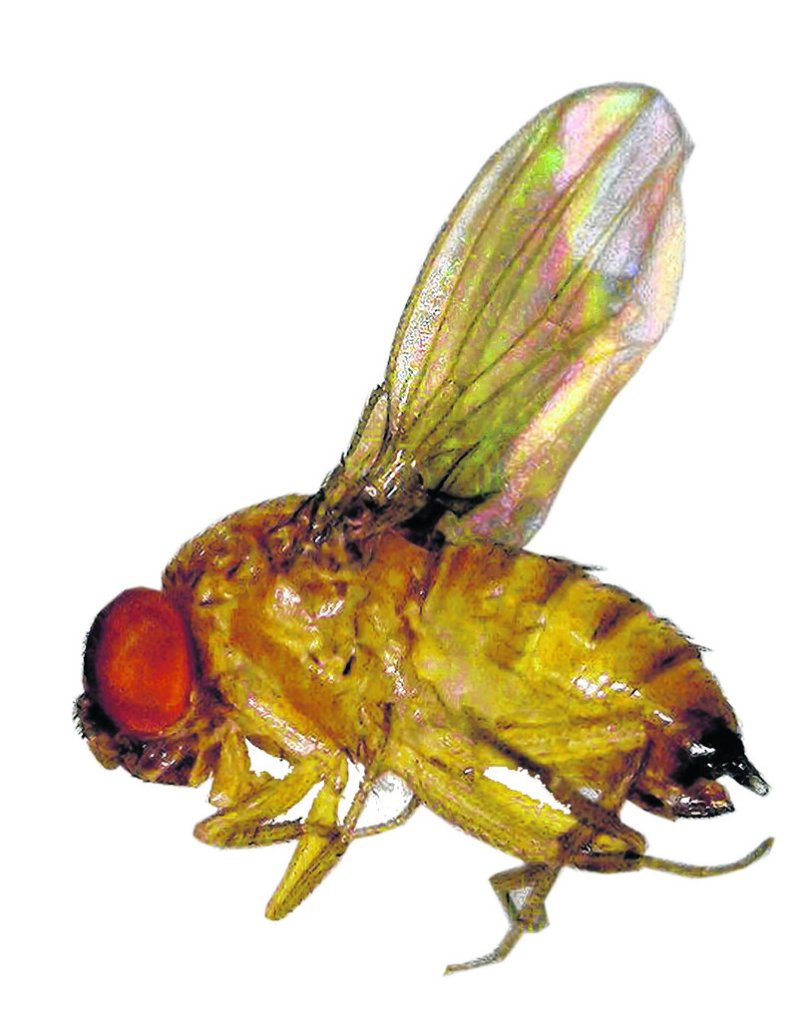MONMOUTH — Maine farmers are seeing a sudden increase in the numbers of an invasive fruit fly, which is potentially bad news for the state’s blueberry industry.
The spotted wing drosophila, a native of northern Asia, was first detected in Maine last summer in small numbers. This summer, traps in Monmouth have bagged thousands per week.
“This could have huge impacts on the wild blueberry industry,” said David Handley, who specializes in vegetables and small fruits for the University of Maine Cooperative Extension. “This is a game-changer.”
Instead of attacking rotten fruit, the females cut small holes in ripening fruit to lay eggs. The fruit looks fine for a day or two afterward but quickly becomes inedible. A consumer may cut into a perfectly good looking fruit, and find tiny maggots inside, Handley told the Sun Journal of Lewiston.
Fighting the insect could cost farmers, who may have to spray pesticides twice a week.
Blueberries are the biggest concern. Maine is the nation’s No. 1 producer of wild blueberries, with 60,000 acres of fields. The state’s blueberry crop has averaged 80 million to 85 million pounds a year for the past five years, and this year the harvest is projected to reach 90 million to 95 million pounds.
The fruit fly, which is one-sixteenth of an inch long, was first spotted in California in 2008, said Jim Dill, a pest management specialist for the UMaine Cooperative Extension.
In the wake of Hurricane Irene last year, Dill set out traps and discovered the spotted wing drosophila in small numbers at four locations. This year, he set out traps early and found nothing in June. But the fruit flies began reappearing in late July, putting late-season crops at risk.
Those crops include blueberries, fall raspberries and blackberries, as well as chokecherries, elderberries, peaches and grapes. The flies don’t appear to bother cranberries, apples or bananas.
At a recent regional meeting of small-fruit experts in New York, the fruit fly was a hot topic, and many scientists were applying for research grants, said Eric Sideman, crop specialist for the Maine Organic Farmers and Gardeners Association. “Extension people are out visiting farms all over to assess the damage and get a handle on what kind of damage there is,” Sideman said. “It’s so new.”
Handley is part of a team that received a $50,000 federal grant to study the fly next year. The extension plans to survey farmers in early October for a more accurate damage assessment.
Send questions/comments to the editors.


